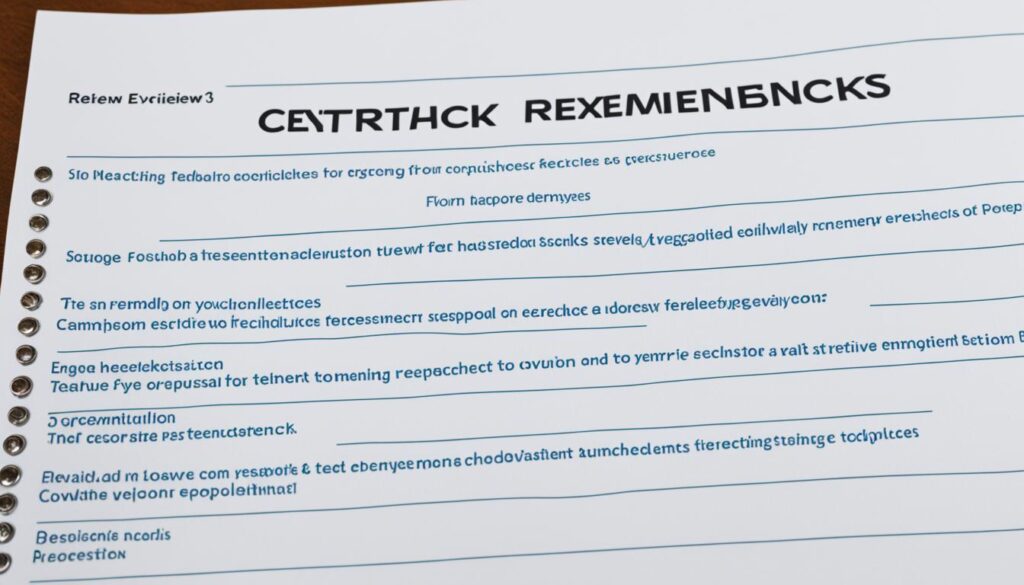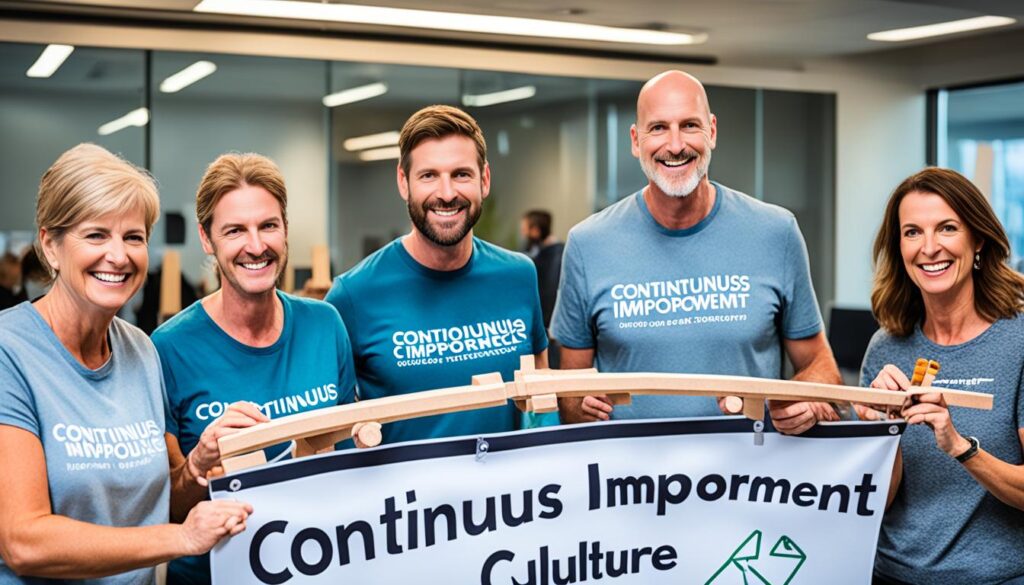Have you ever thought about how top companies turn negative feedback into chances for growth? In today’s fast business world, knowing how to handle criticism well is key. We’re looking into how to train review response teams to use feedback as a tool for success.
Training review response teams is key in today’s market focused on customers. When dealing with negative feedback, talking face-to-face works best1. This way, team members can understand subtle cues and connect better. Keeping the focus on work issues, not personal traits, keeps feedback useful and actionable1.
A skilled review response team can turn crises into chances for growth. By offering clear, kind communication and support, we can change negative experiences into positive ones1. This approach not only makes customers happier but also boosts team spirit and efficiency.
Interestingly, 30% of employees feel their opinions don’t matter enough at work2. This shows the importance of a strong feedback loop in companies. By making a place where feedback is welcome and used, we can increase engagement, better performance, and improve the employee experience2.
Key Takeaways
- Face-to-face communication is best for handling negative feedback
- Focus on work-related issues, not personal character
- Clear, compassionate communication is essential
- Offer support and resources to struggling team members
- Create a feedback loop to improve engagement and performance
- Transform negative experiences into growth opportunities
Understanding the Importance of Feedback in Professional Settings
Feedback is key in making a workplace better and helping it get better over time. Top companies ask for feedback from many people to do better3. This helps teams work better and creates a place where everyone feels free to speak up.
Getting feedback from others makes employees more engaged. Studies show that those who look for and use feedback are 40% more into their jobs4. This leads to better team work and a happier work environment.
When feedback is part of how we manage performance, it makes people and teams do better5. Giving specific feedback helps people meet their goals by 10% more than without it5.
How we give feedback matters a lot. Giving both praise and constructive advice works best5. Giving feedback with a positive tone makes people more likely to listen by 40%4.
Feedback is the cornerstone of growth in professional settings. It guides us towards improvement and excellence.
Good communication is important for feedback. Most employees, 67%, say getting constructive feedback helps them know their strengths and areas to work on4. Knowing this is key for growing personally and moving up in your career.
| Aspect | Impact |
|---|---|
| Engagement | 40% increase with active feedback seeking |
| Performance | 10% goal exceedance with specific feedback |
| Acceptance | 40% increase with positive intent |
| Self-awareness | 67% improvement in understanding strengths/weaknesses |
Feedback is a strong tool for boosting employee engagement, improving how we communicate, and keeping things getting better at work354.
Key Components of Training for Review Response Team

Effective training for our response team focuses on key skills like managing feedback. We work on active listening, emotional smarts, and solving conflicts. This helps our team do well.
We teach our team to stay calm when they get negative feedback. They learn not to get defensive and instead, clear up any unclear feedback. This helps us get clear examples and explanations, making our talks more productive.
Professional growth is a big part of our training. We show our team how to take responsibility and offer solutions. Saying thanks for feedback and thinking about what we learned is also important.
“Effective response teams are built on a foundation of continuous learning and adaptability.”
Teams that keep training see a 20% boost in doing well under pressure6. This shows how important it is to keep training and updating our team for new challenges.
Our training includes simulations to spot what we don’t know and make things better. Studies show that 85% of teams that practice often get better at being ready6.
| Training Component | Skills Developed | Impact on Performance |
|---|---|---|
| Active Listening | Comprehension, Empathy | Improved Understanding of Feedback |
| Emotional Intelligence | Self-awareness, Emotional Regulation | Enhanced Composure in Challenging Situations |
| Conflict Resolution | Negotiation, Problem-solving | Effective Management of Difficult Conversations |
| Feedback Analysis | Critical Thinking, Pattern Recognition | Identification of Improvement Opportunities |
By focusing on these areas, we make sure our review response team can handle feedback well. They help our organization keep getting better.
Implementing Effective Communication Strategies
We know how key communication strategies are for team work and talking at work. Our training for review response teams teaches them to give feedback clearly and specifically. This is vital, as 80% of workers say their company’s communication is not good enough7.
We use a mix of constructive criticism and positive feedback to improve communication. This way, we highlight what’s going well and what needs work. It helps create a place where everyone can grow.

Our training focuses on open talks and listening to each other. We teach how to deal with defensiveness and turn critical feedback into steps to take. This matches research that says clear info is as vital as food or water in emergencies8.
“Effective communication is not just about speaking; it’s about ensuring understanding.”
We use a detailed plan for emergency communication:
- Tailoring messages for different people
- Using many ways to communicate
- Providing clear, doable information
- Encouraging feedback and questions
Our plan looks at how people react to alerts, like their traits, the group they’re in, and their past experiences. This helps lower risks and keep businesses running smoothly in emergencies89.
| Communication Strategy | Purpose | Impact |
|---|---|---|
| Clear Messaging | Ensure understanding | Improved response time |
| Two-way Dialogue | Encourage feedback | Enhanced team collaboration |
| Positive Reinforcement | Boost morale | Increased engagement |
By using these strategies, we build a culture of good communication. This helps teams grow and makes the organization successful.
Building a Culture of Continuous Improvement

We think it’s key to build a culture that always looks for ways to get better. This helps teams grow and get stronger. Toyota shows us how this can make every team member better over time10.
Starting a learning culture needs strong leaders. We push team leaders to let employees find ways to improve their work. This makes continuous improvement a big part of the company10.
Checking how well people are doing is important. Regular talks about how we’re doing help people see what they’re good at and what they can do better11. We use peer reviews to give different views on how people are doing. This shows what they’re great at and where they can get better11.
We make sure our feedback is based on data. This makes it more reliable and helps set clear goals for getting better11. We tie these goals to Objectives and Key Results (OKRs) to push for success and manage talent11.
“Mistakes are the portals of discovery.” – James Joyce
We don’t blame people for mistakes. Instead, we see them as chances to learn. This way, we get more innovation and creativity. It makes people more engaged and do better work12.
| Continuous Improvement Strategy | Benefits |
|---|---|
| Regular feedback sessions | Promotes growth and positive workflow changes |
| Peer reviews | Offers unique performance perspectives |
| Data-driven feedback | Enhances credibility and goal-setting |
| Blameless culture | Fosters innovation and increases engagement |
With these strategies, we make a strong feedback loop. This loop supports continuous improvement and helps the company grow. Our review response team gets better, more flexible, and ready for any challenge.
Conclusion: Empowering Your Review Response Team for Success
We’ve looked at how team empowerment is key in handling feedback and boosting professional success. By training review response teams well, companies can improve how they manage feedback. This makes employees happier and helps the company work better13.
Improving performance is the main goal. Giving timely, helpful feedback all year helps young employees grow and keeps a culture of ongoing learning. A survey showed 63% of GenZers like this method, showing its value in today’s work world14. Using a 360° feedback system gives a full view of an employee’s work, helping them know themselves better and find ways to get better13.
In summary, training review response teams well is crucial for turning negative feedback into chances for growth. By focusing on good communication, ongoing improvement, and using tools for easier feedback, companies can make a positive work culture. This leads to success. Remember, when employees are highly engaged, they are 87% less likely to leave, showing the value of investing in your team’s growth13.
FAQ
Why is effective training for review response teams crucial?
How can managers deliver negative feedback effectively?
Why is feedback important in professional settings?
What key skills should training for review response teams focus on?
What communication strategies should be emphasized in training?
How can a culture of continuous improvement be created for review response teams?
Source Links
- How to Give Negative Feedback to Employees – Professional & Executive Development | Harvard DCE – https://professional.dce.harvard.edu/blog/how-to-give-negative-feedback-to-employees/
- How to respond to feedback so your team members feel heard – https://workleap.com/blog/replying-employee-feedback/
- 5 Reasons Why Feedback is Important – https://www.snapsurveys.com/blog/5-reasons-feedback-important/
- Requesting and Accepting Feedback – https://hr.msu.edu/performanceexcellence/tools-staff-feedback.html
- Feedback is Critical to Improving Performance – https://www.opm.gov/policy-data-oversight/performance-management/performance-management-cycle/monitoring/feedback-is-critical-to-improving-performance/
- Emergency Response Team Training: Navigating Roles and Responsibilities – HSE STUDY GUIDE – https://www.hsestudyguide.com/emergency-response-team-training/
- 10 effective organizational communication strategies for the modern workplace – https://www.joinblink.com/intelligence/organizational-communication-strategies
- Lesson 3. Communicating in an Emergency – https://training.fema.gov/emiweb/is/is242b/student manual/sm_03.pdf
- Stay Ahead: Implementing The Best Practices For Emergency Response | Learnexus – https://learnexus.com/best-practices-for-emergency-response/
- Blog | How to inspire a culture of Continous improvement – https://ccitracc.com/blog/inspire-a-culture-of-continuous-improvement/
- How do you write areas of improvement in performance reviews? – https://www.peoplebox.ai/blog/areas-of-improvement-in-performance-reviews/
- Embrace Mistakes to Build a Learning Culture | Benjamin Laker – https://sloanreview.mit.edu/article/embrace-mistakes-to-build-a-learning-culture
- 41 performance review phrases for managers, peers & yourself – https://eletive.com/blog/performance-review-phrases/
- 50 Performance Review Phrases To Inspire Your Team – https://www.joinassembly.com/blog/50-performance-review-phrases-to-inspire-and-improve-your-team

